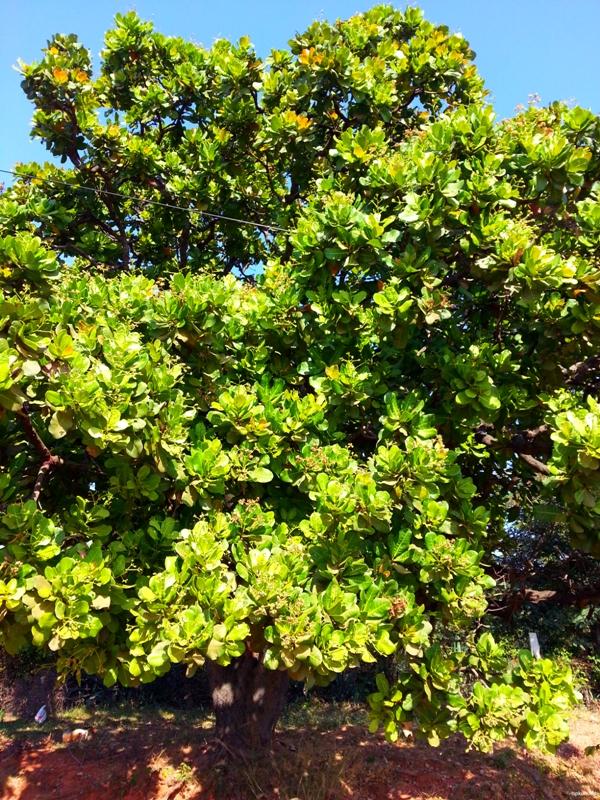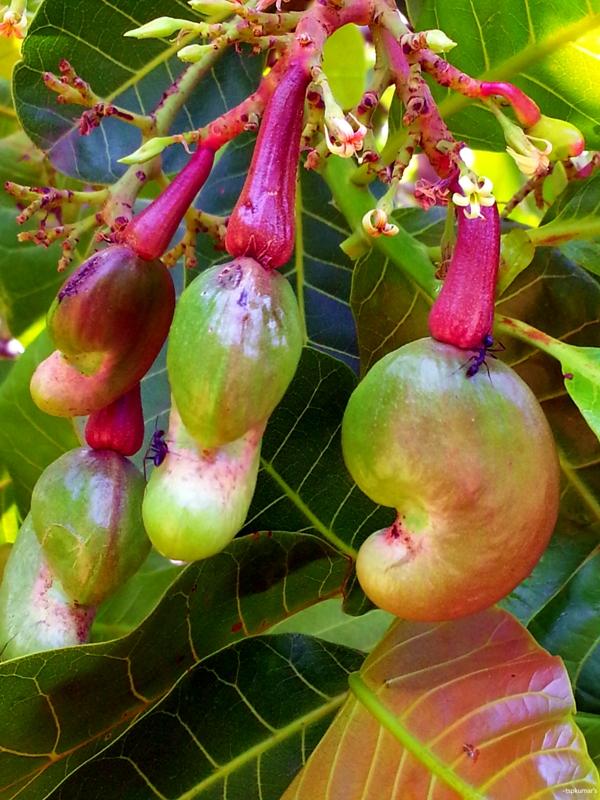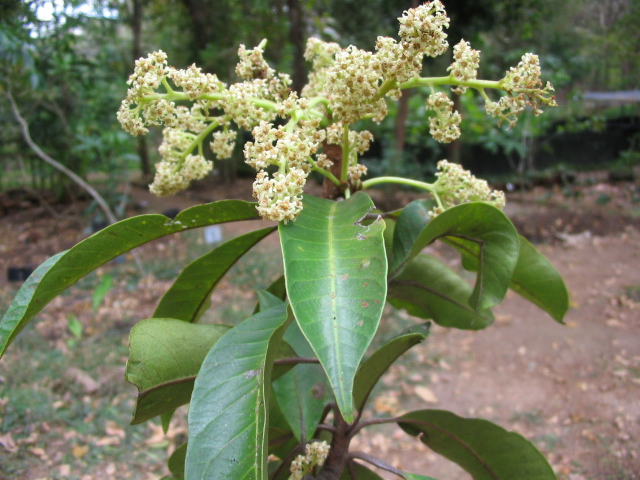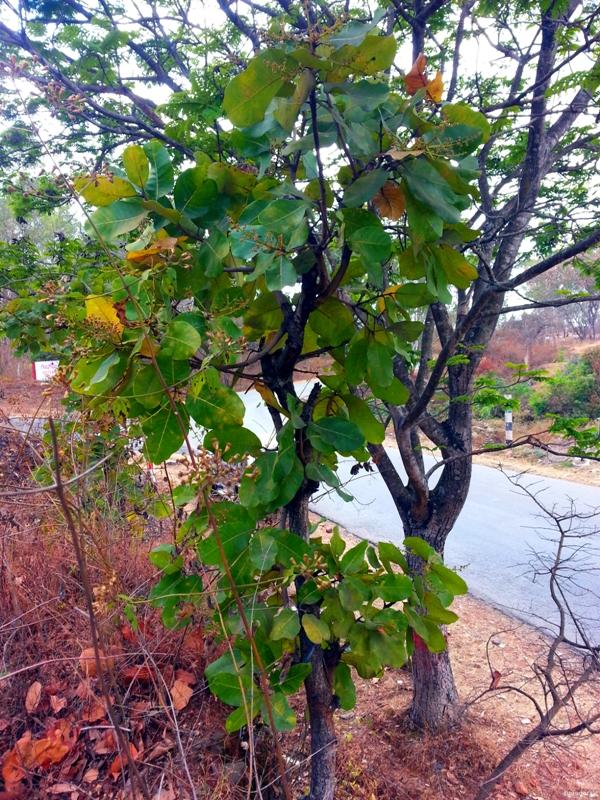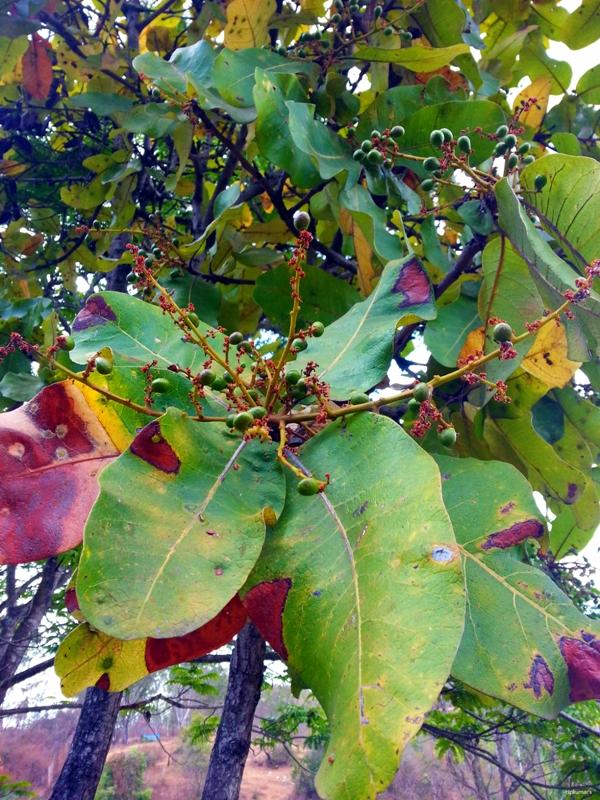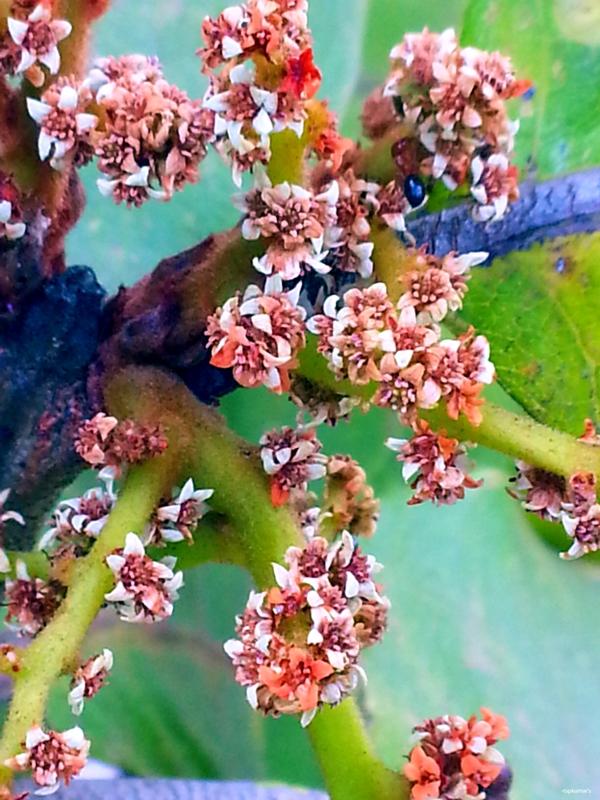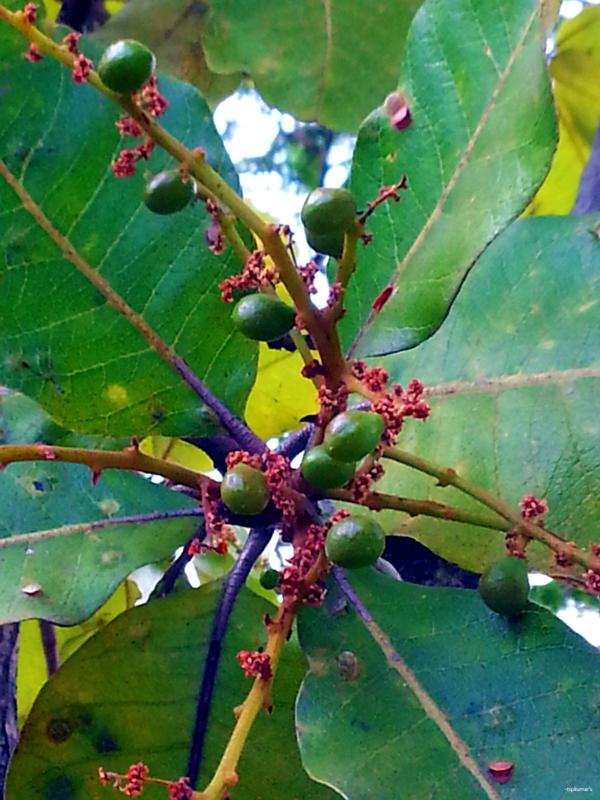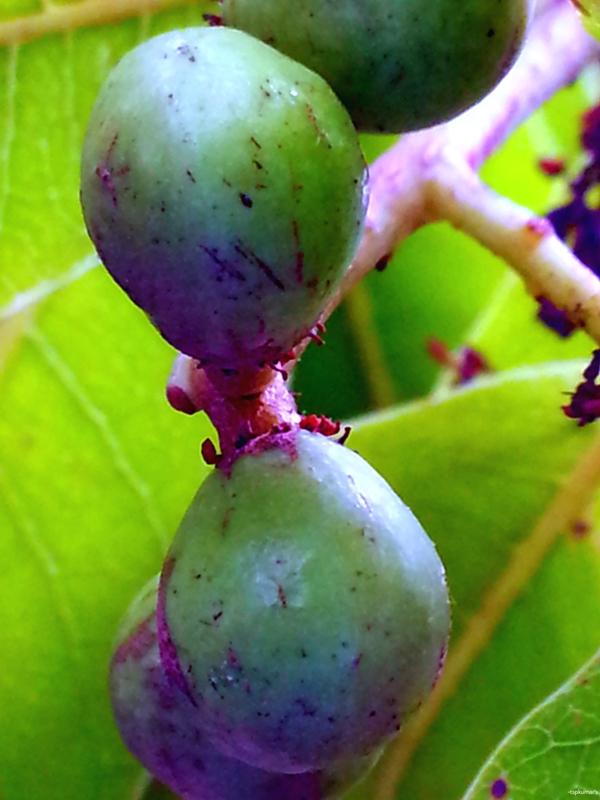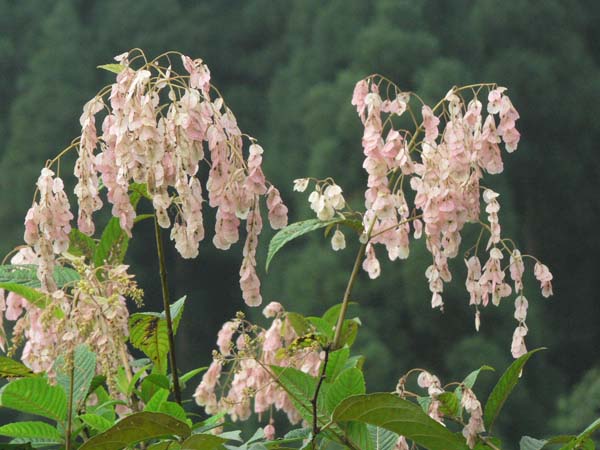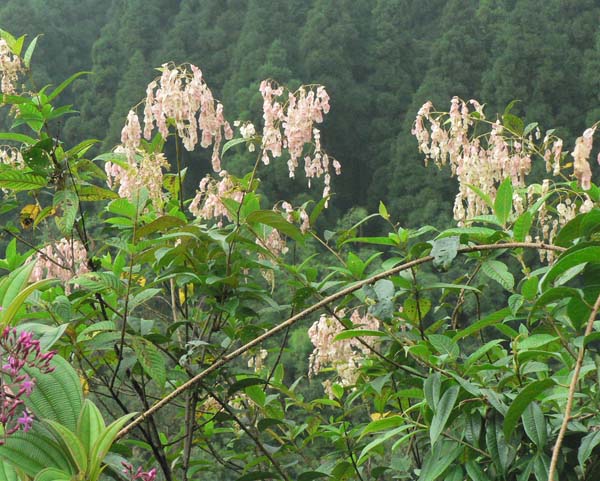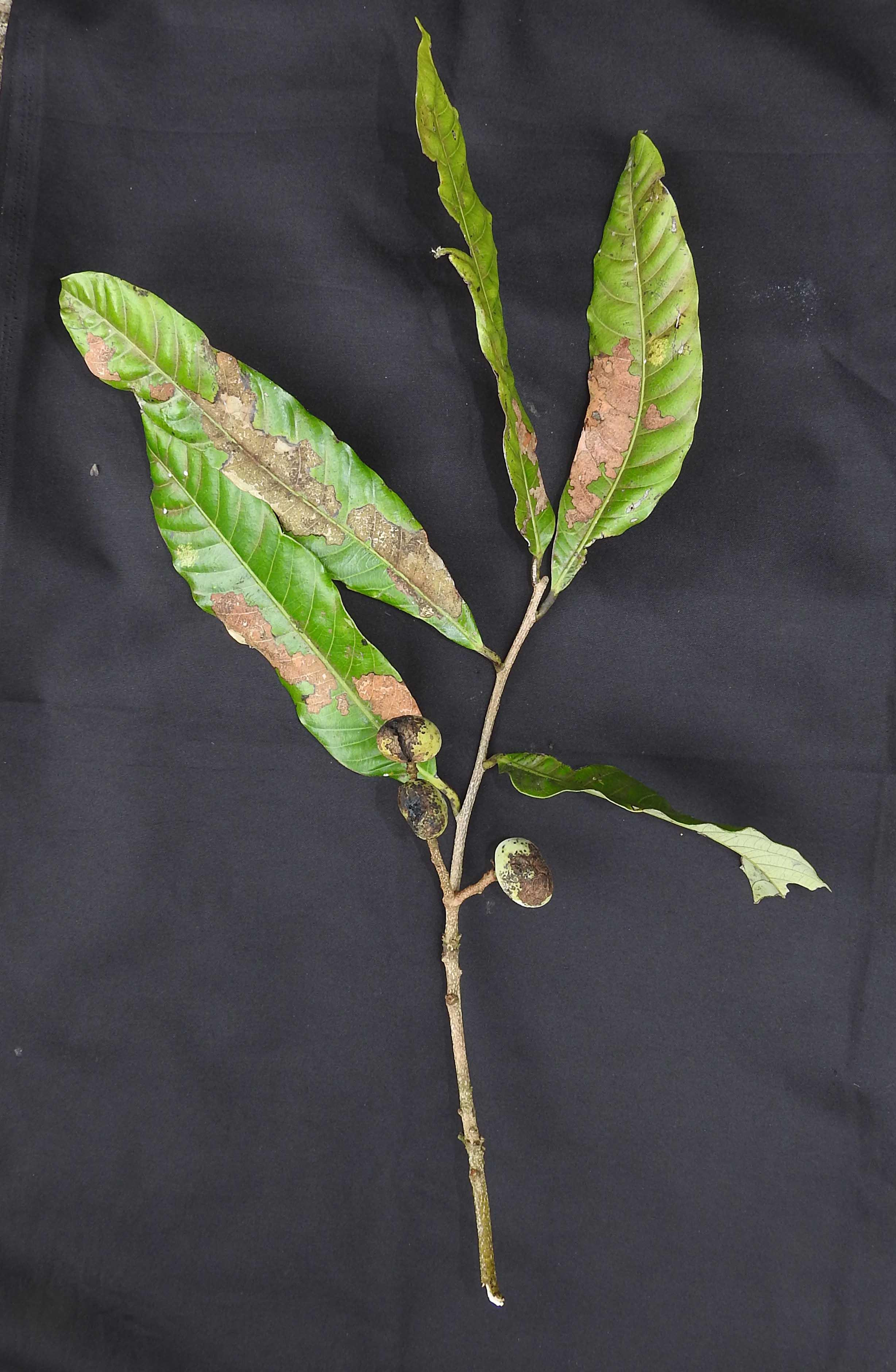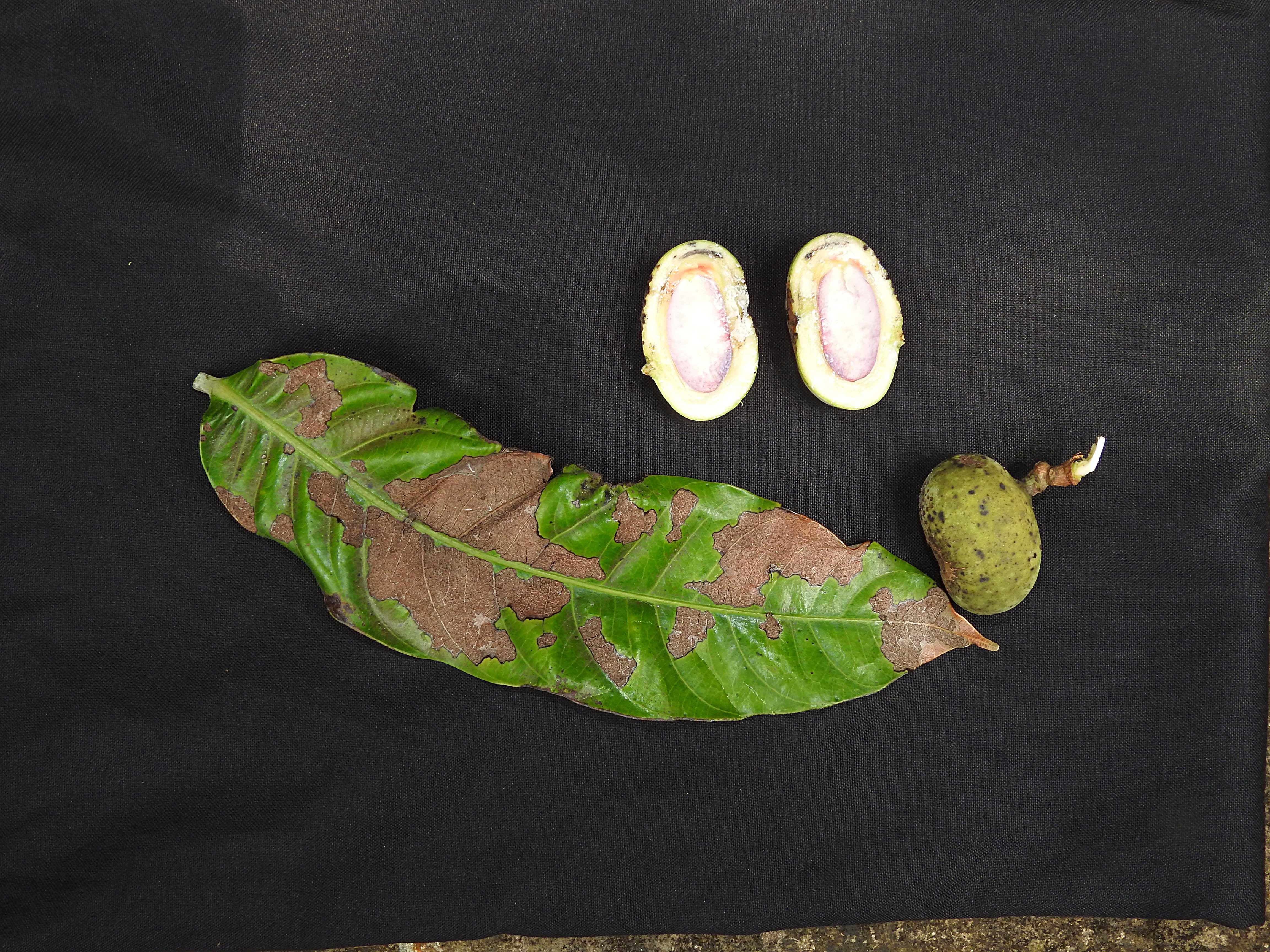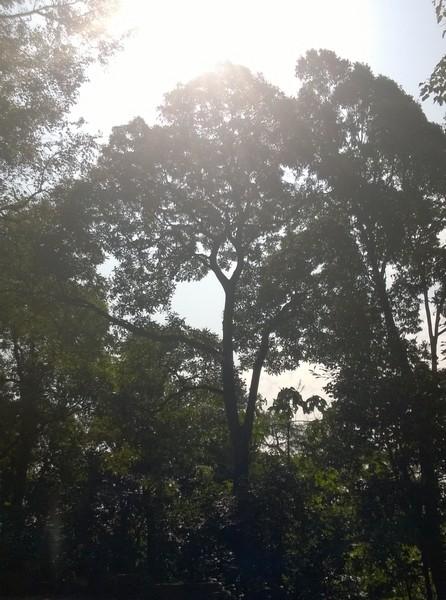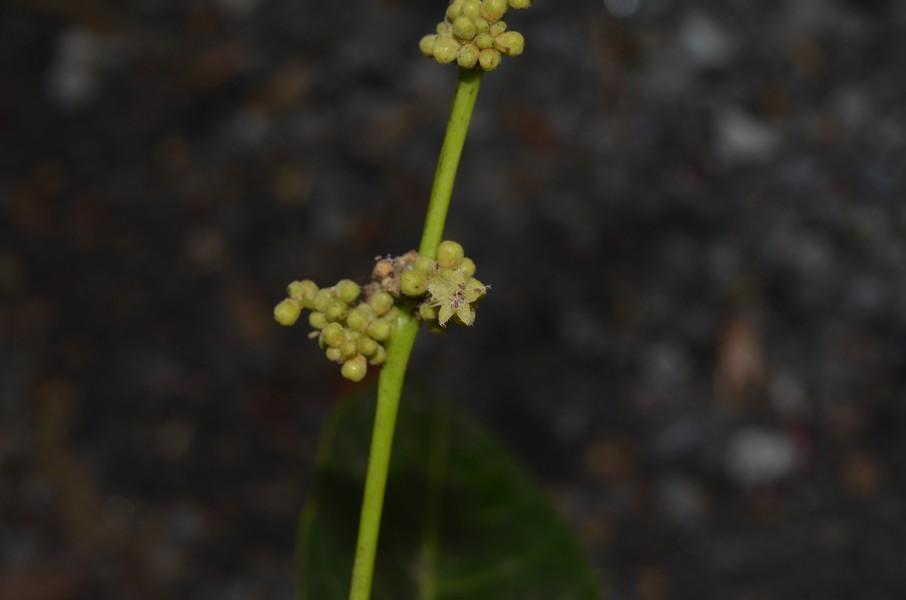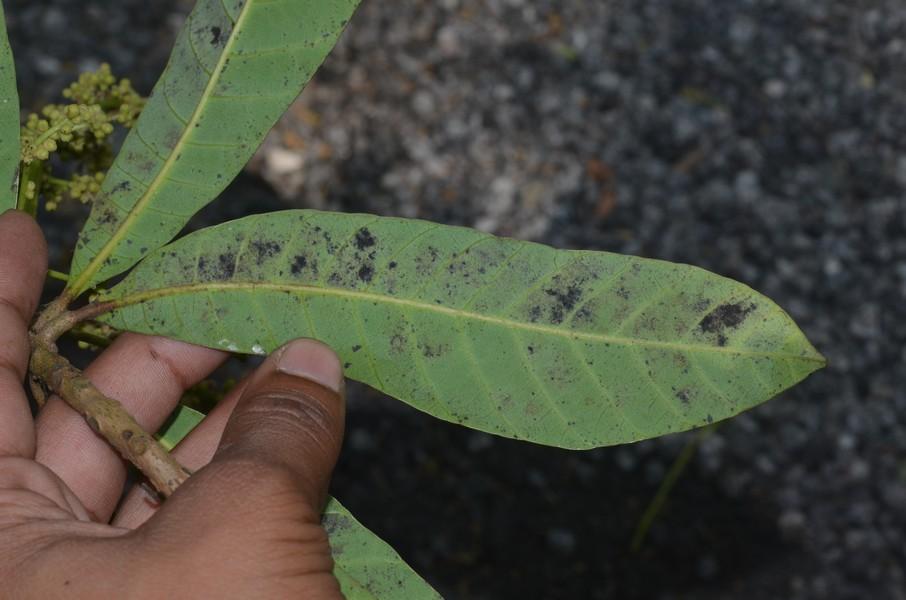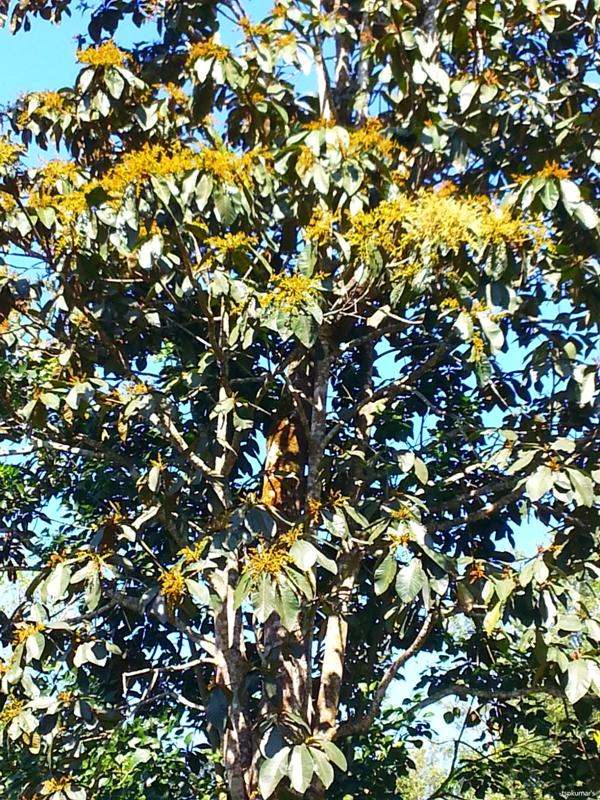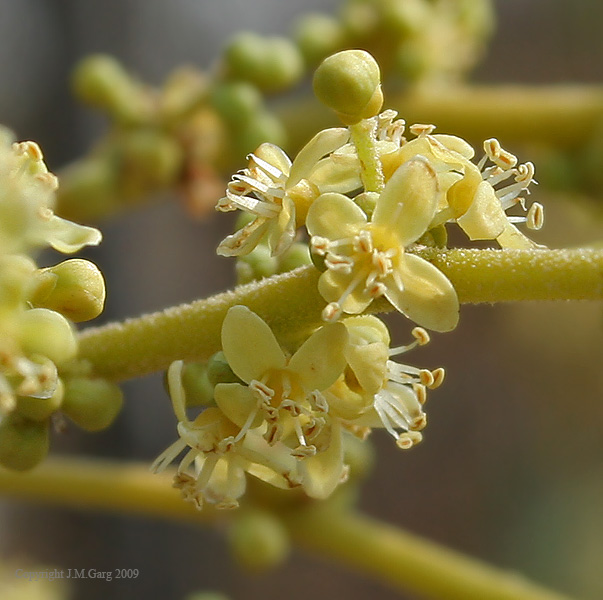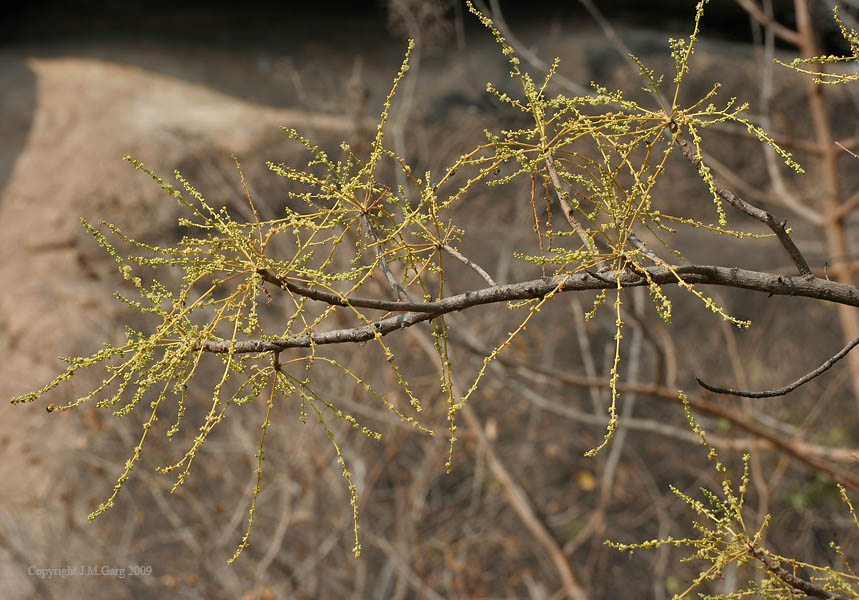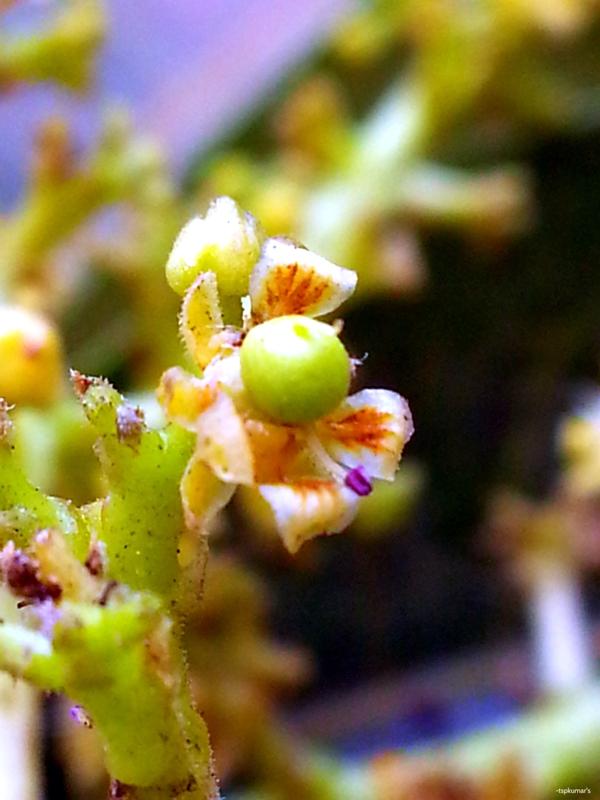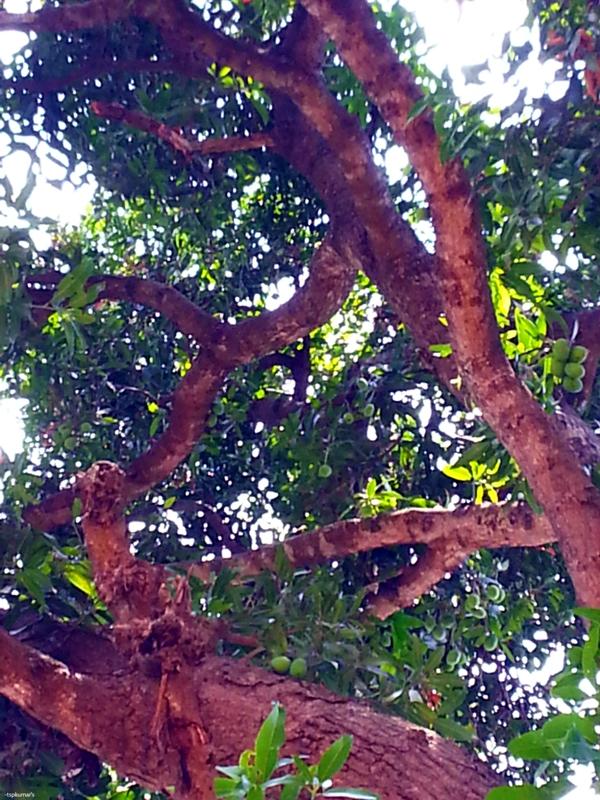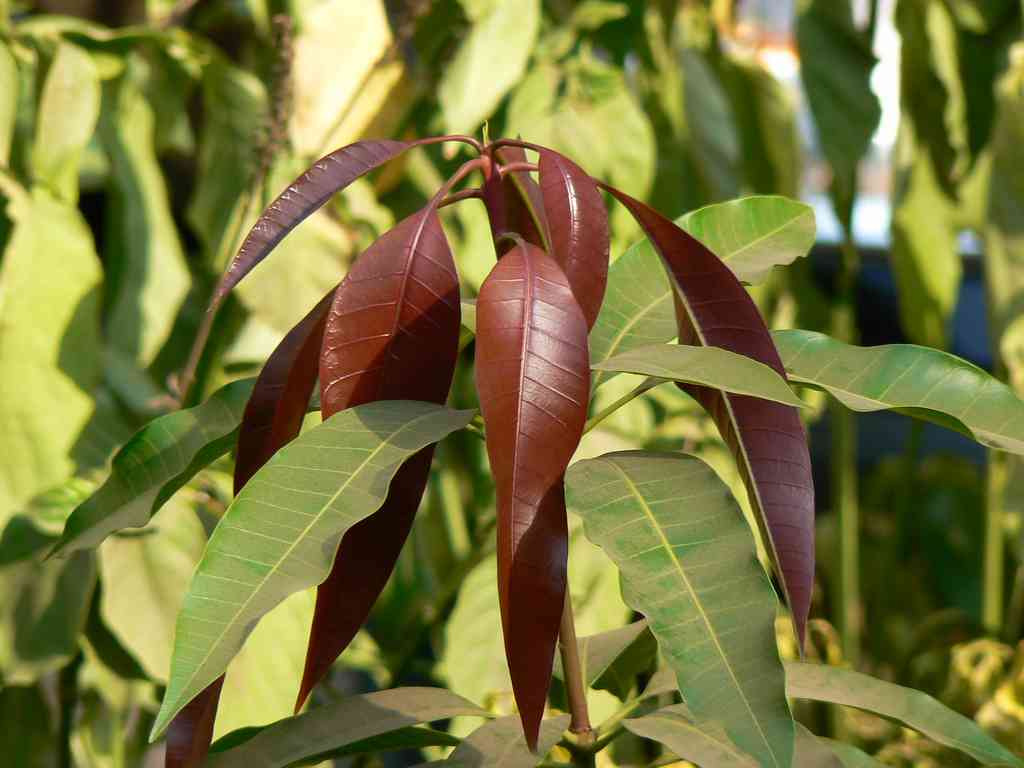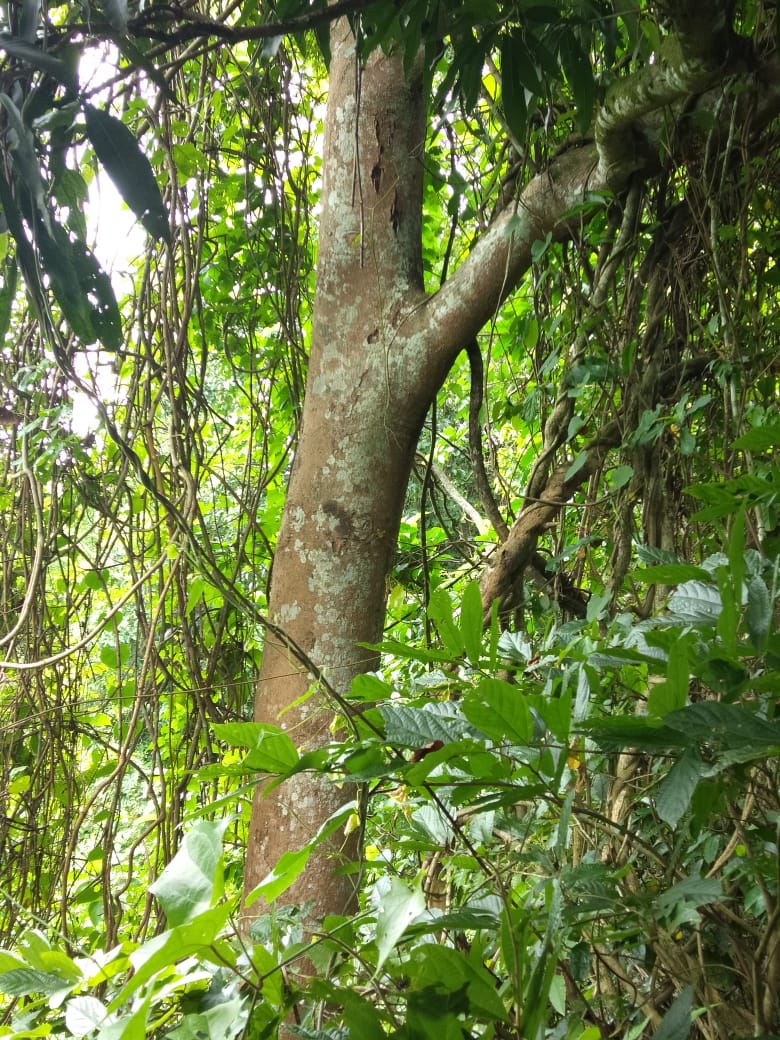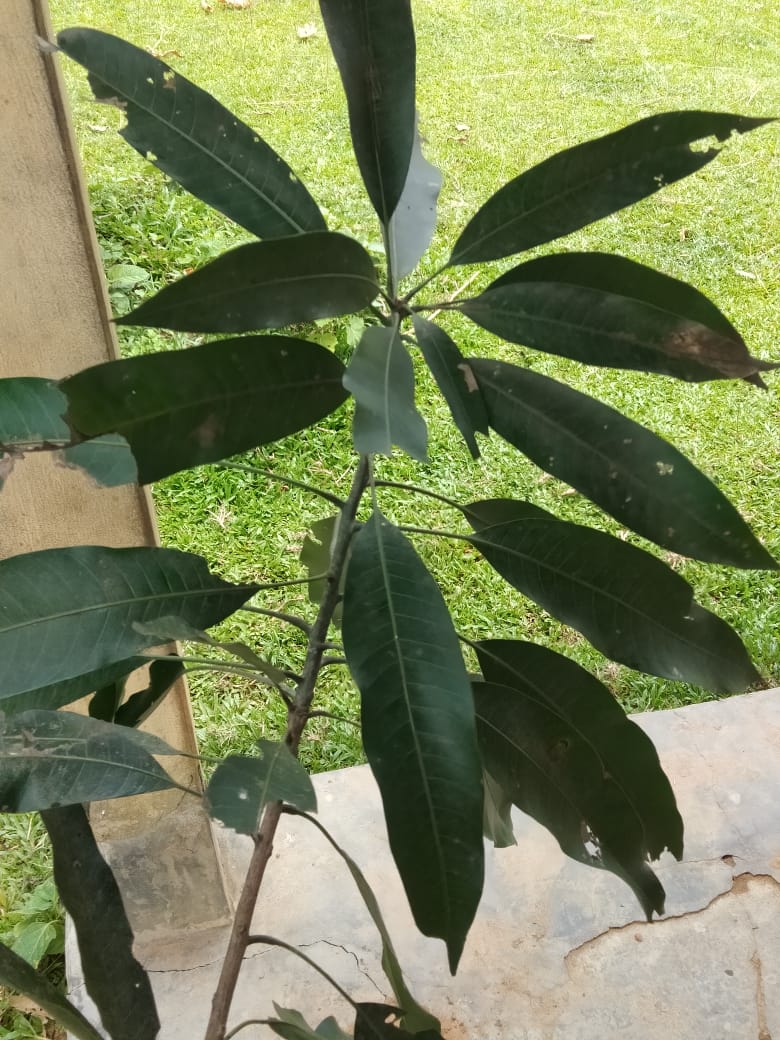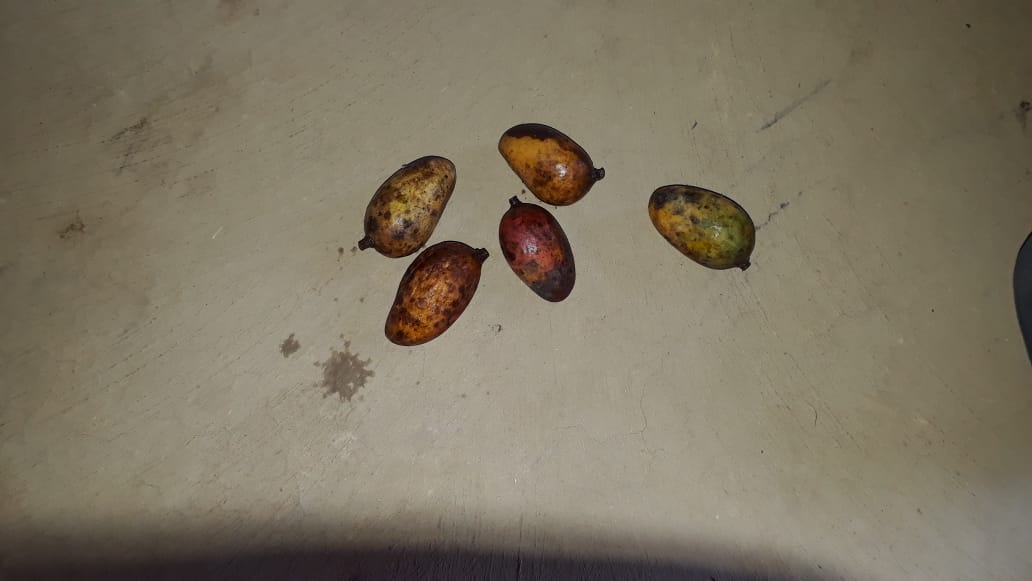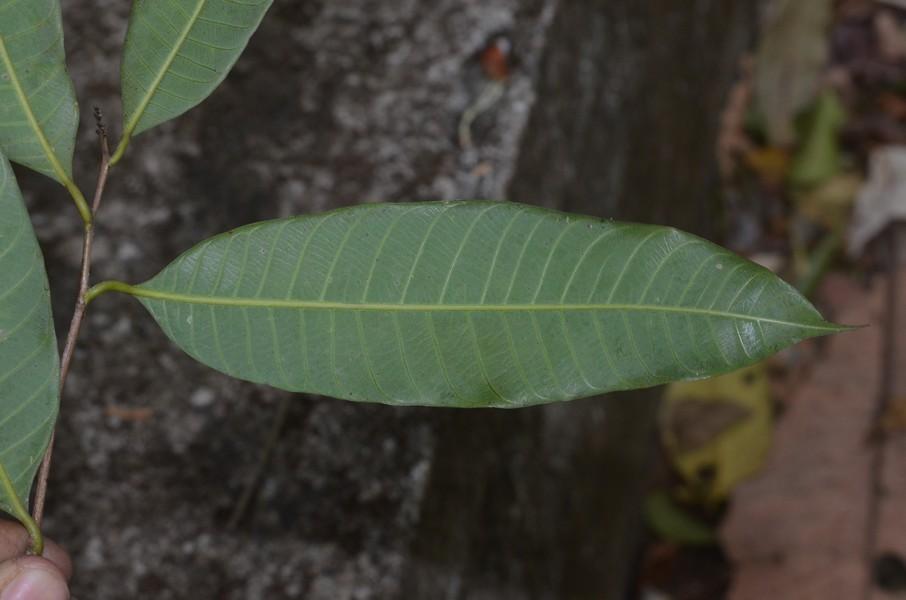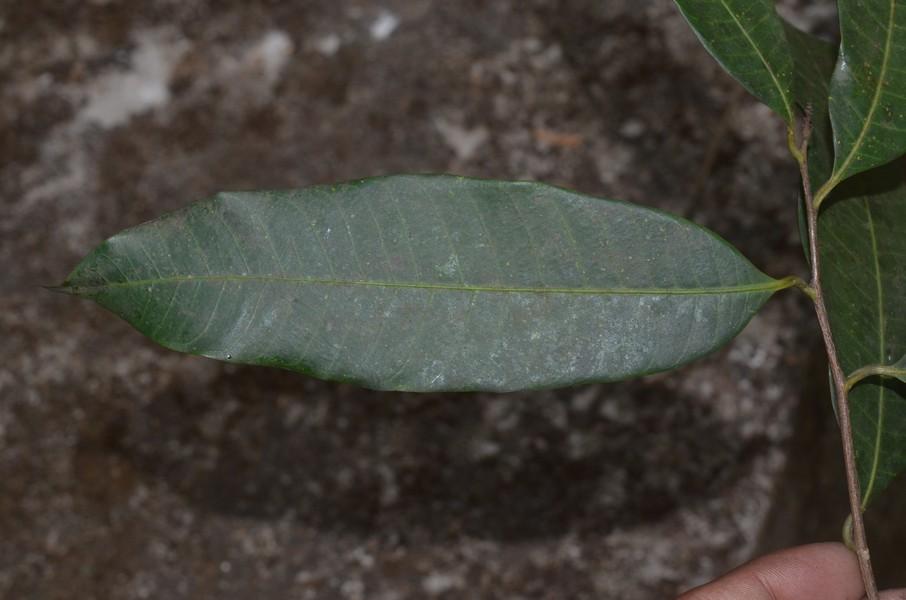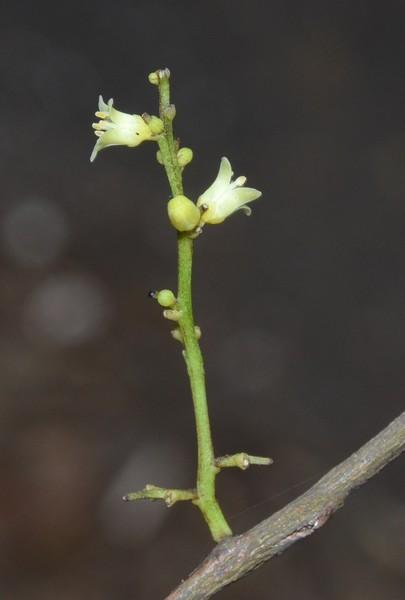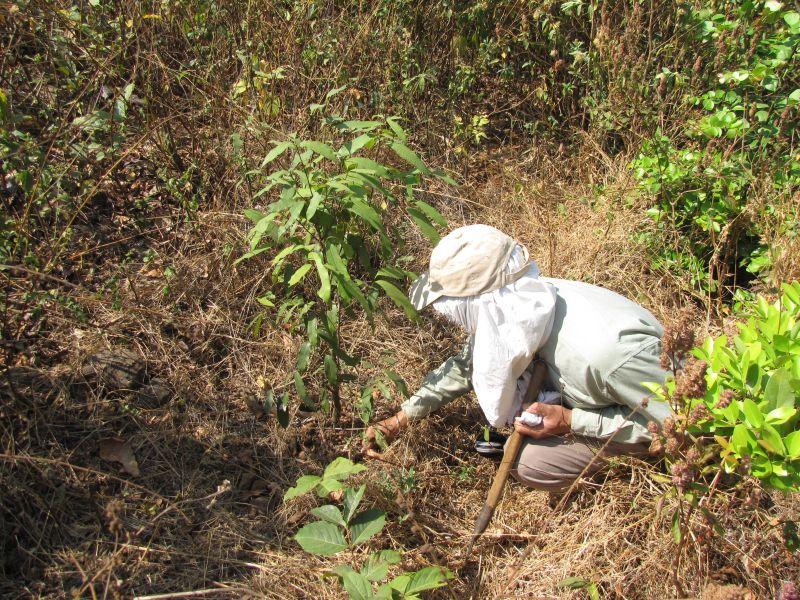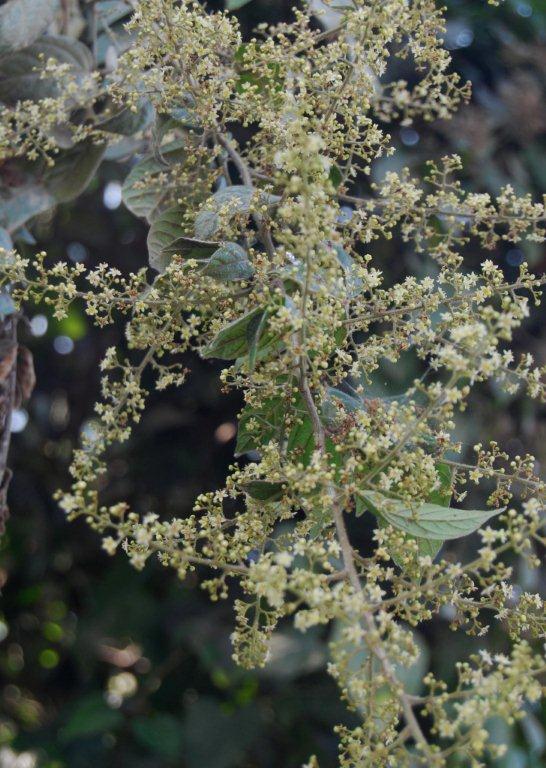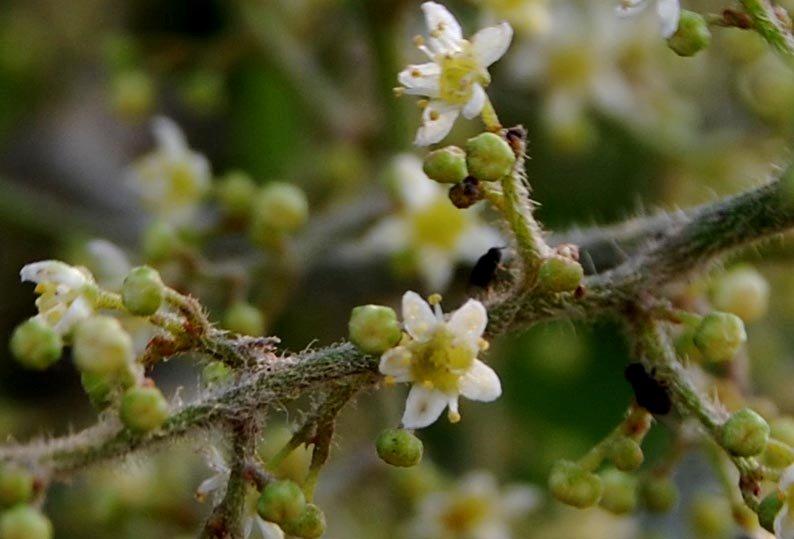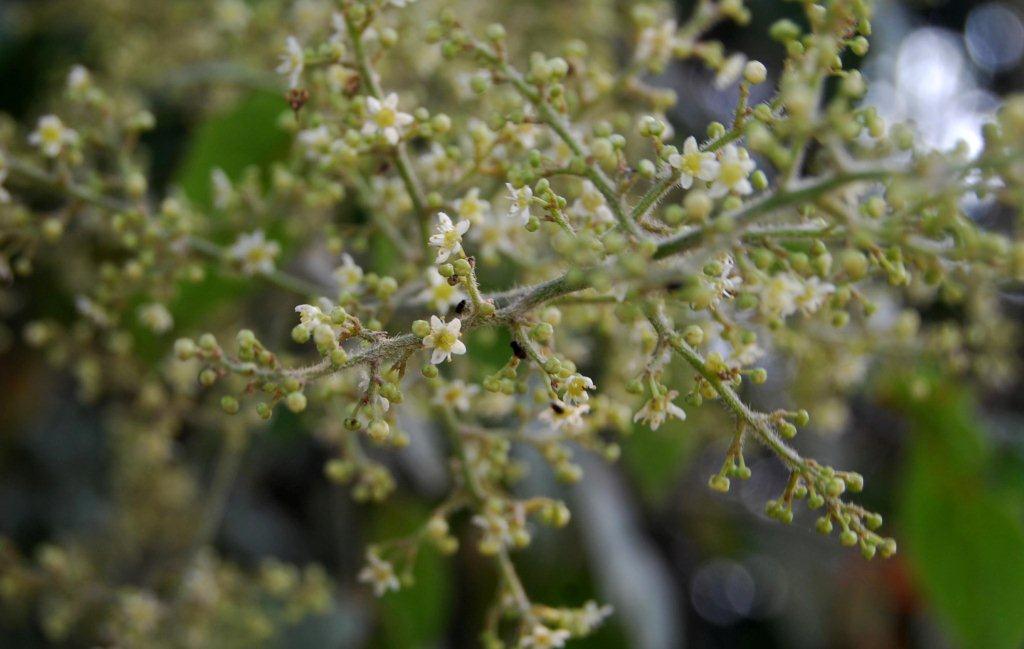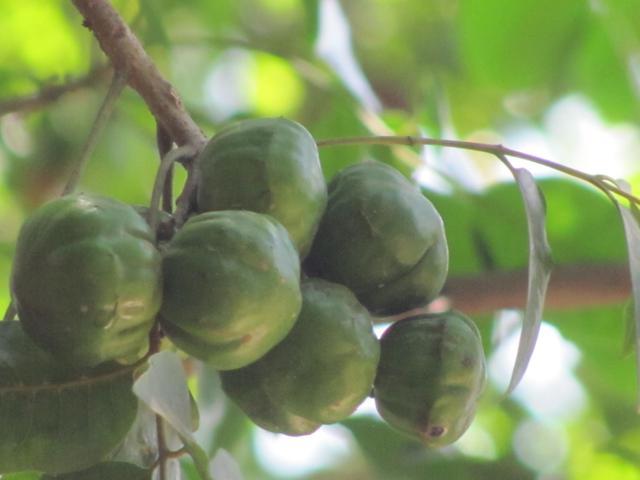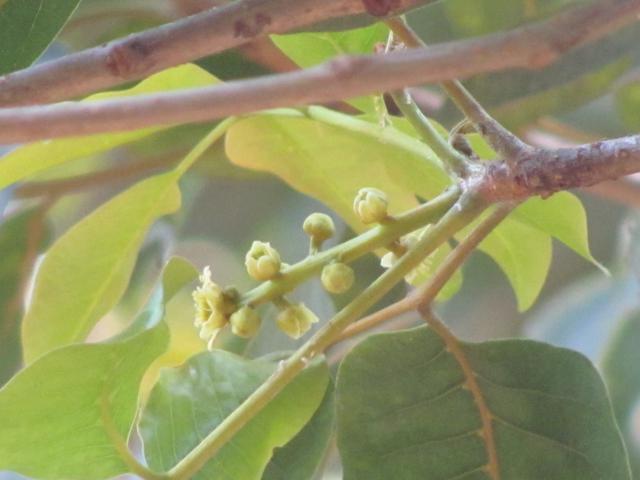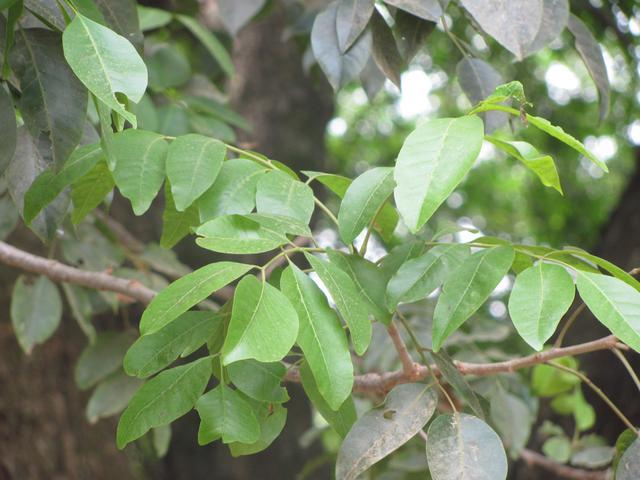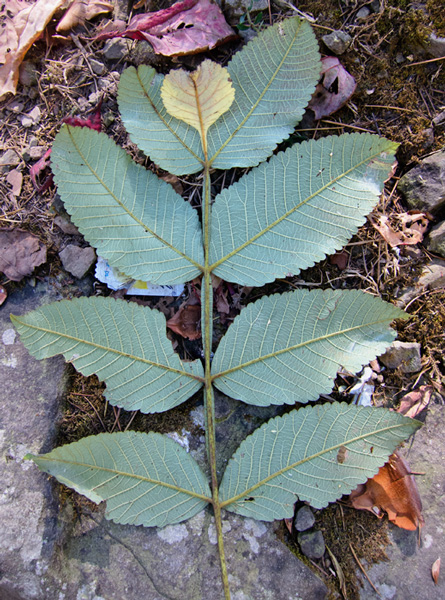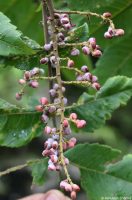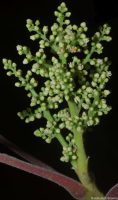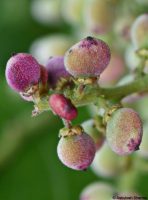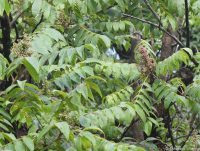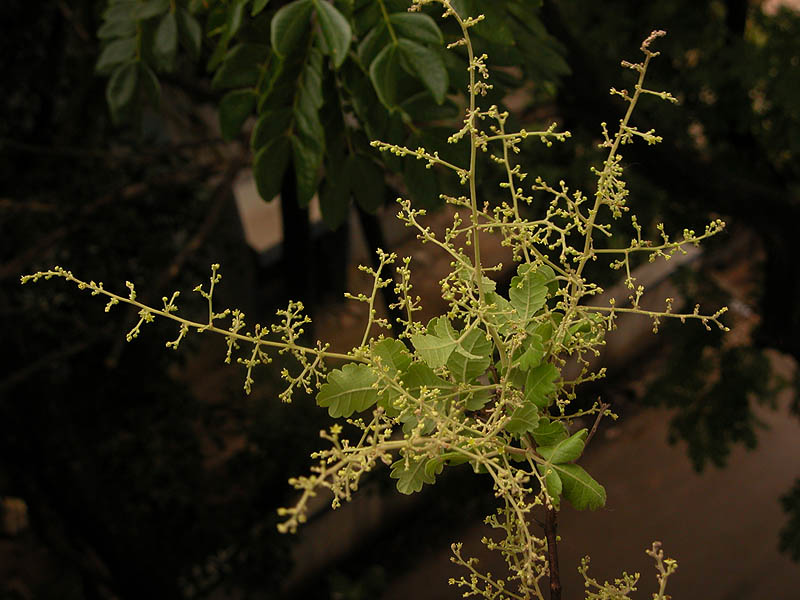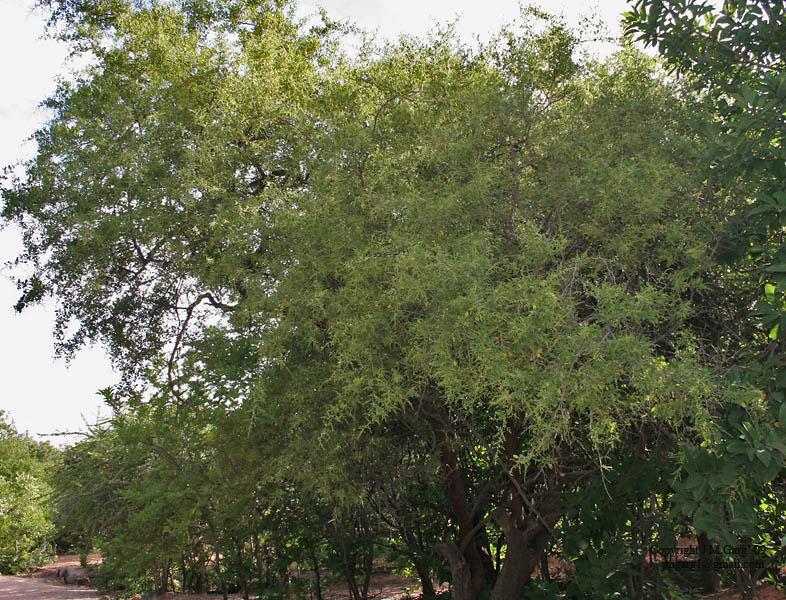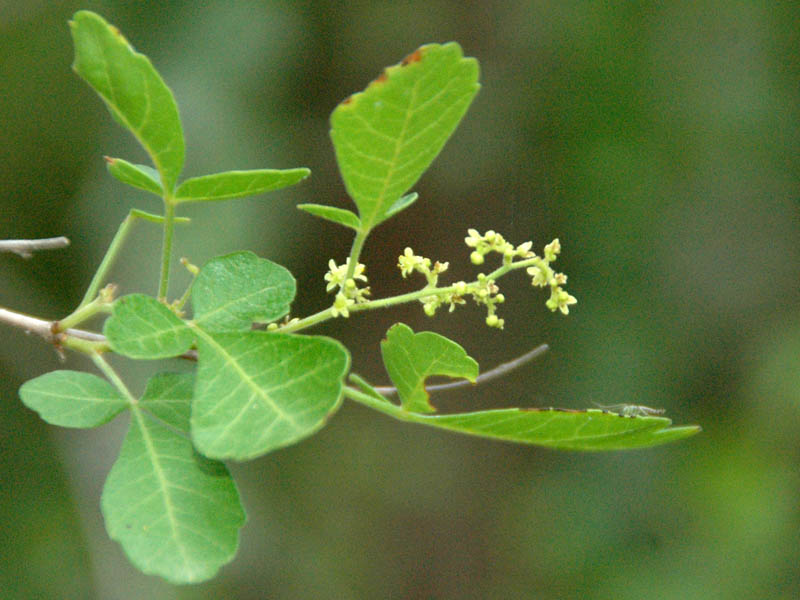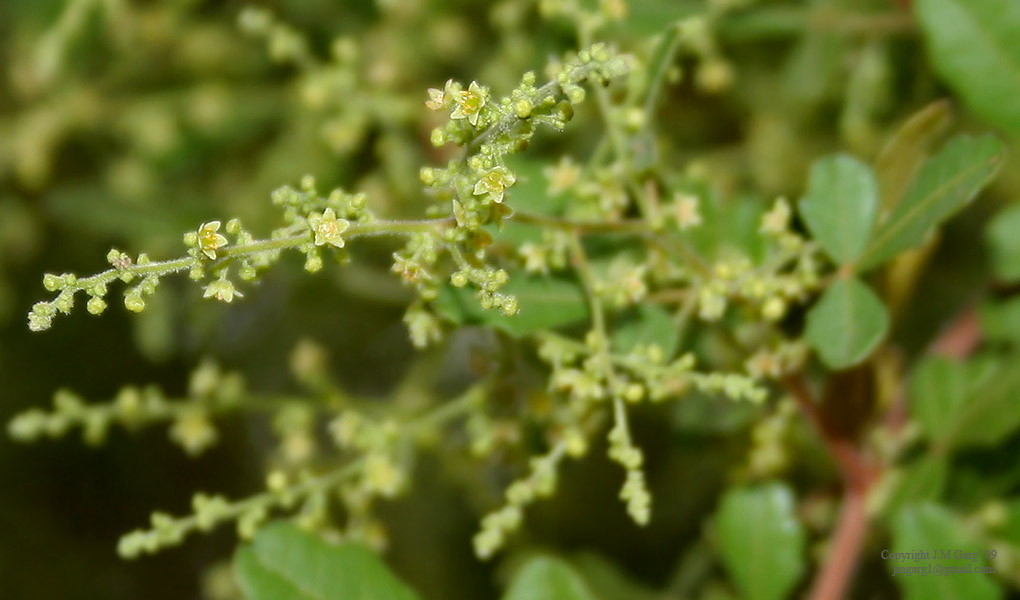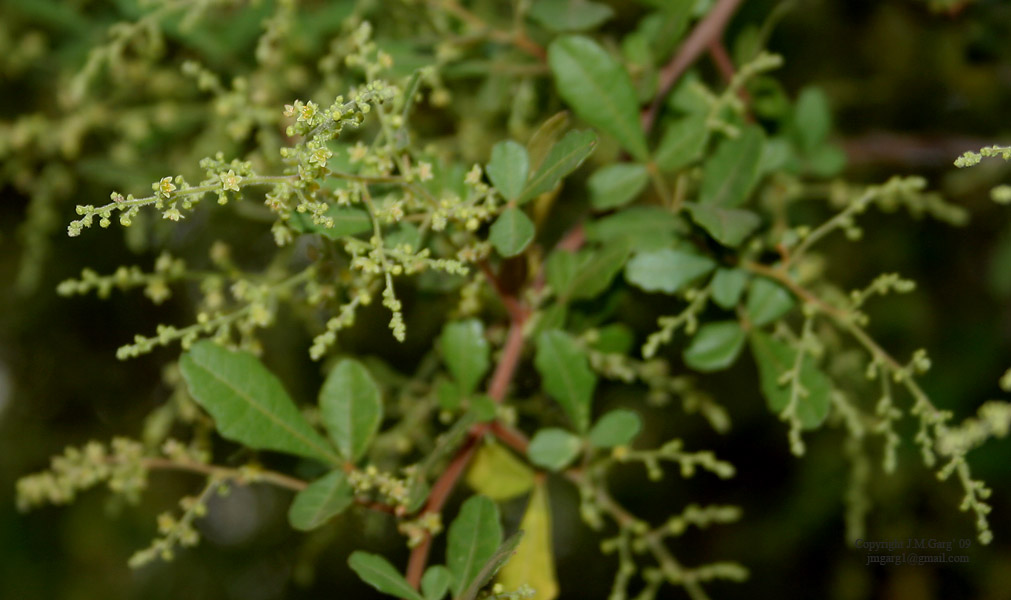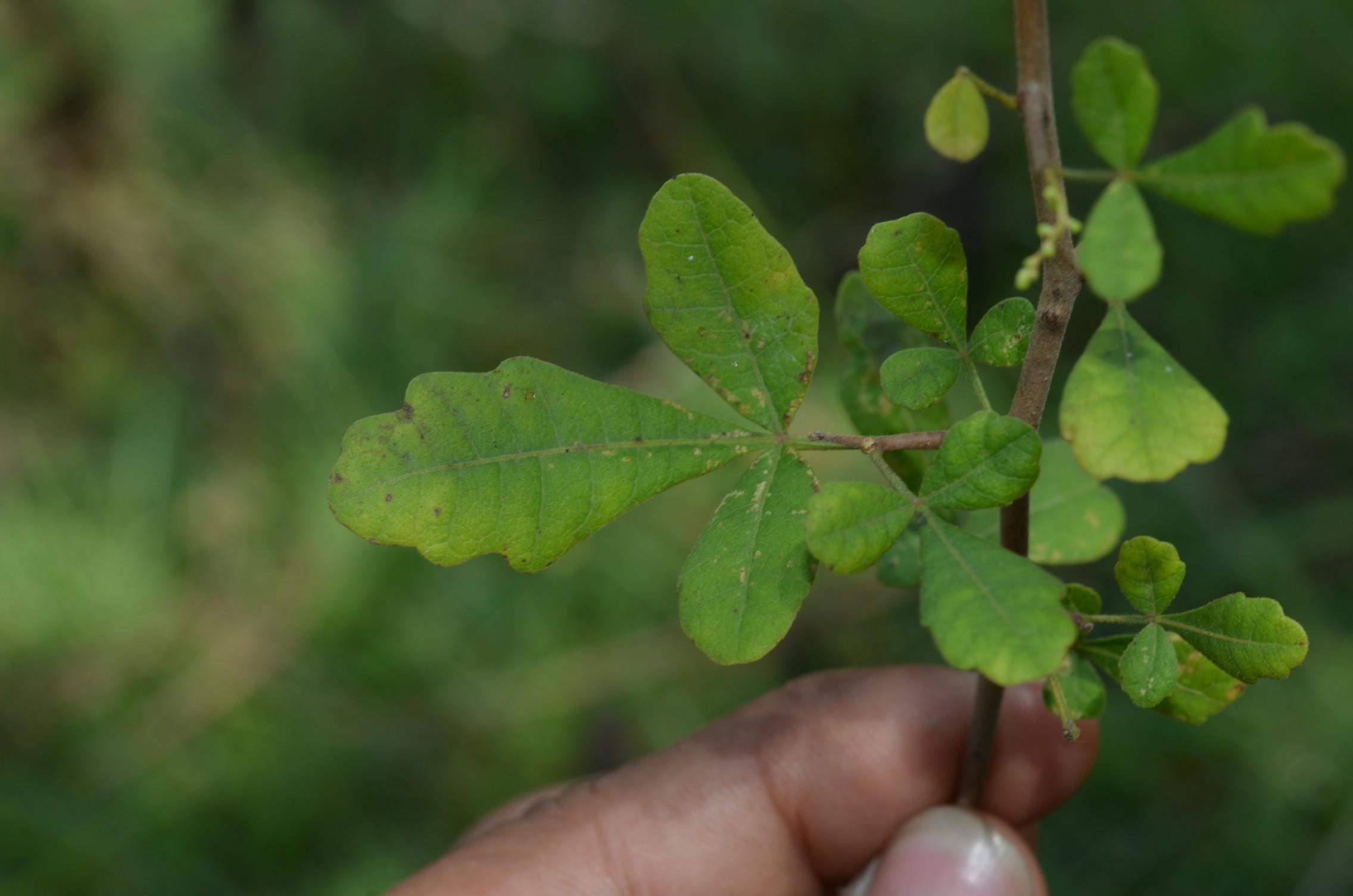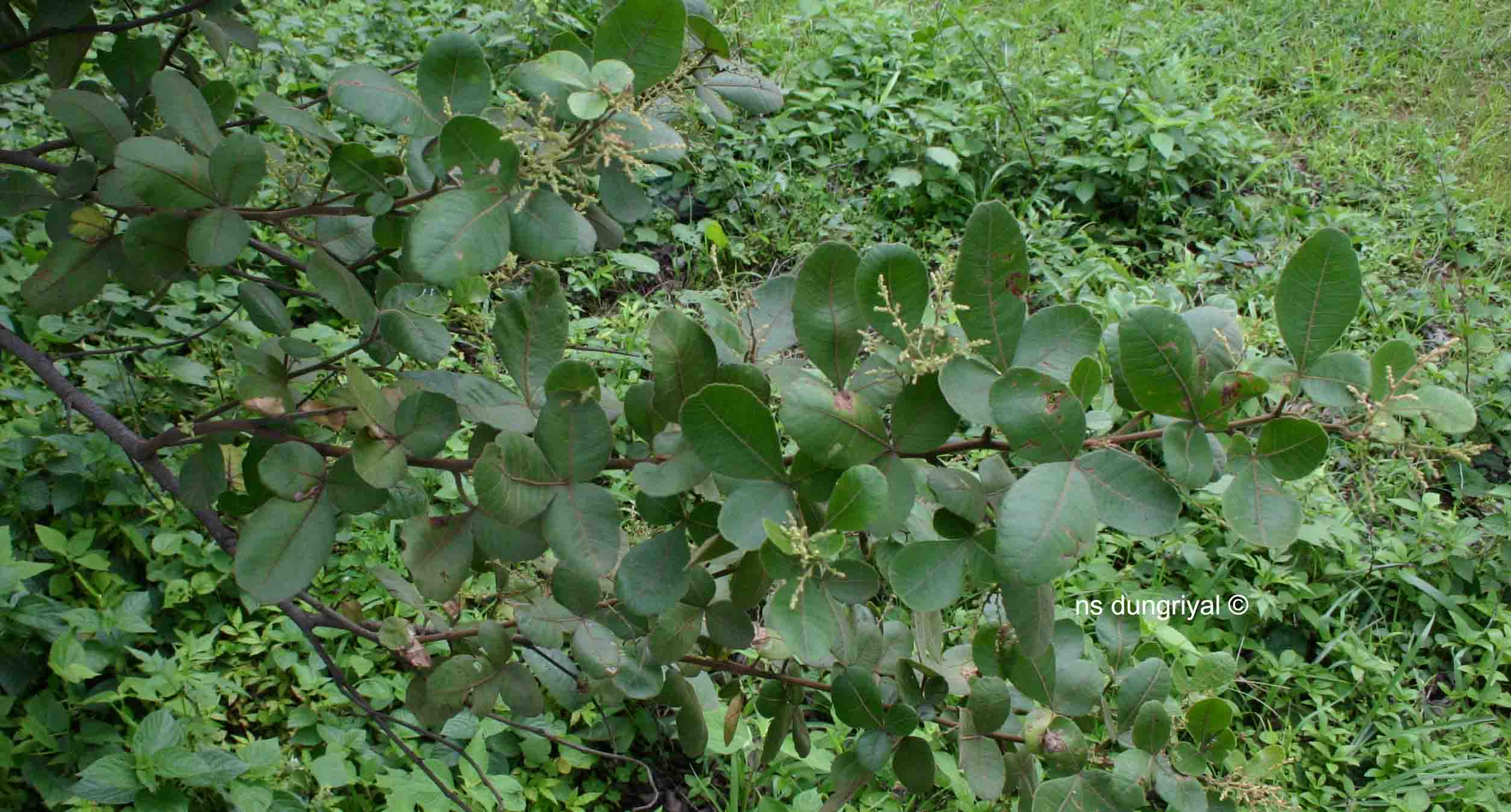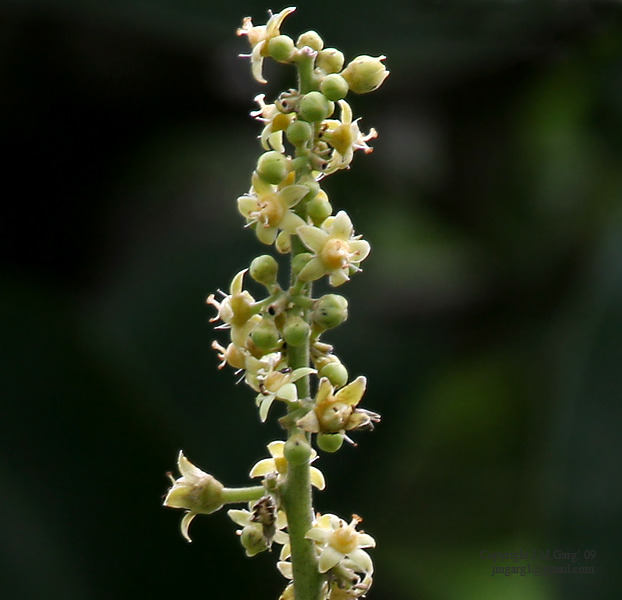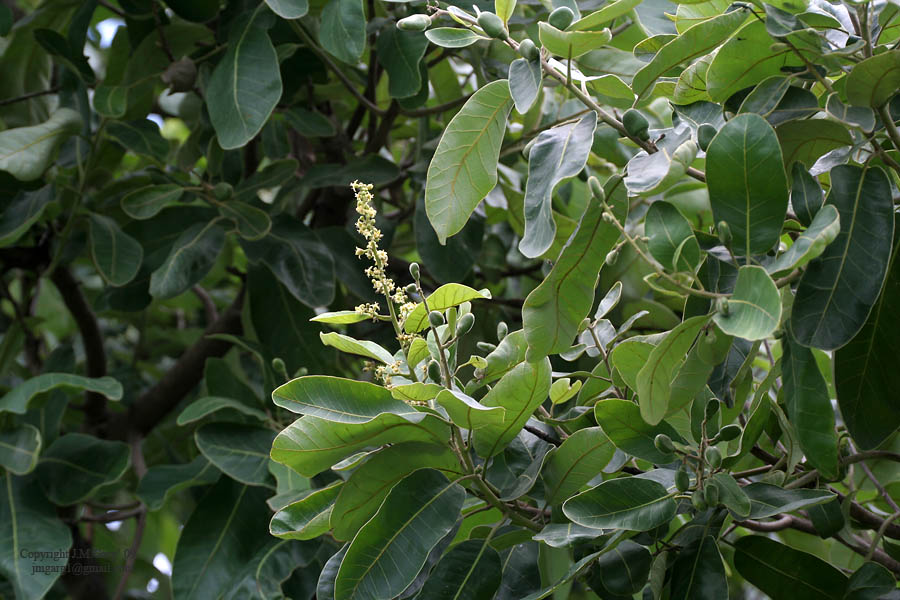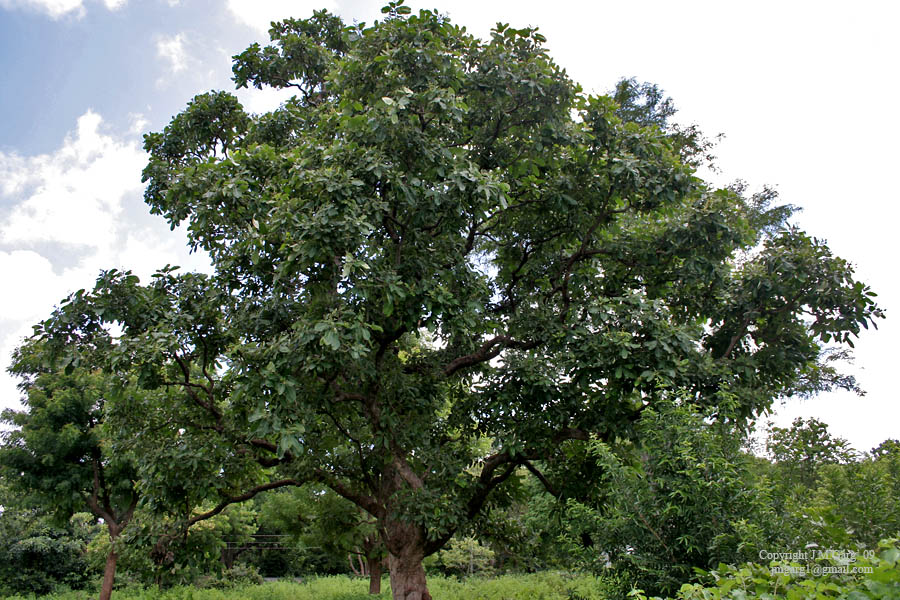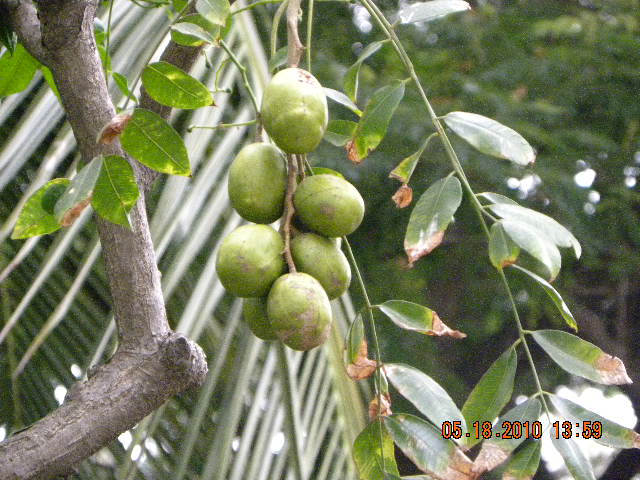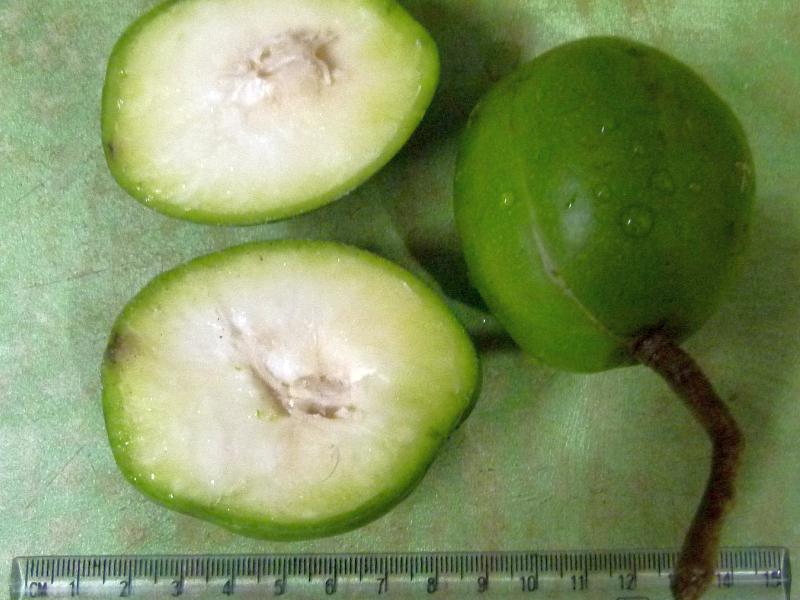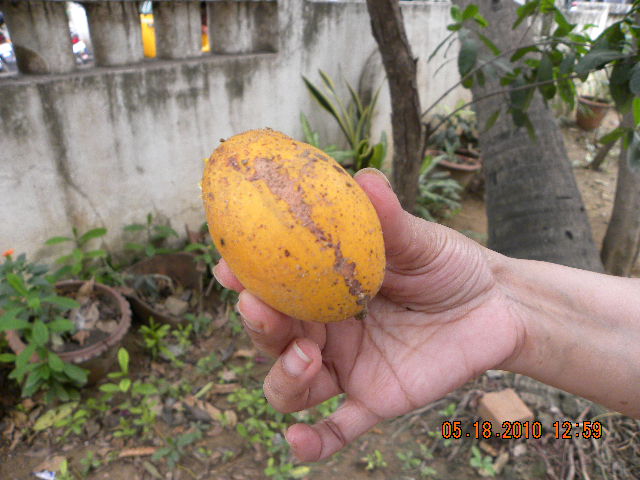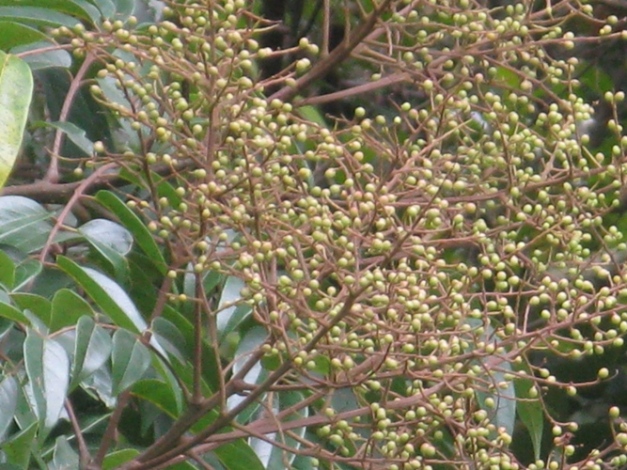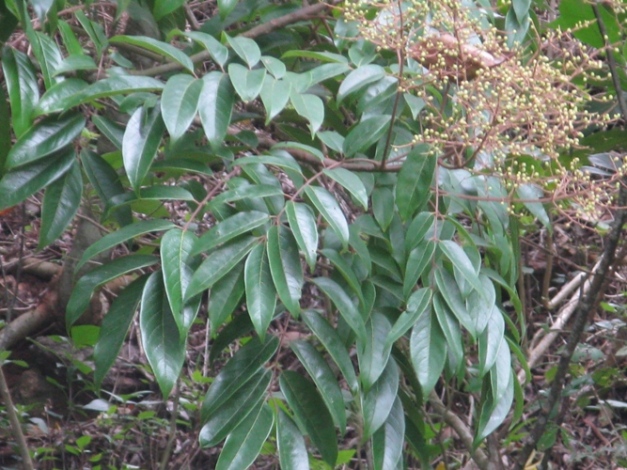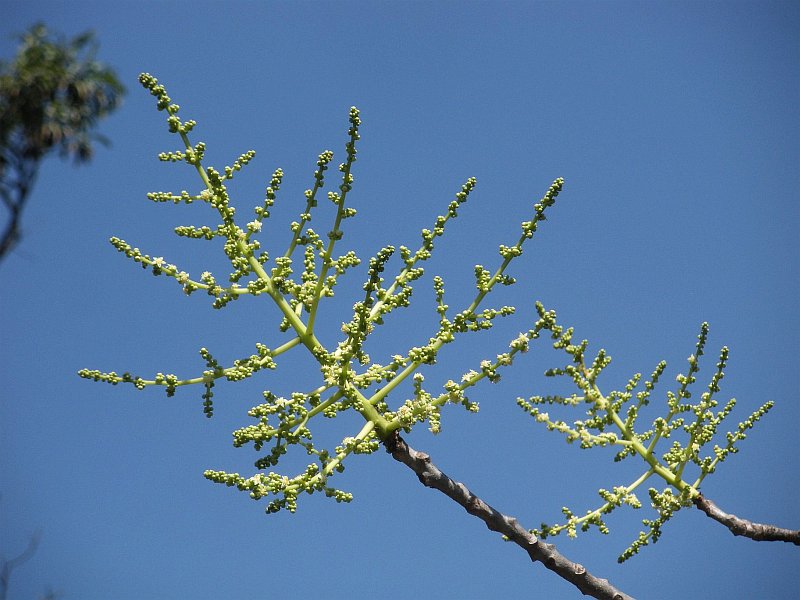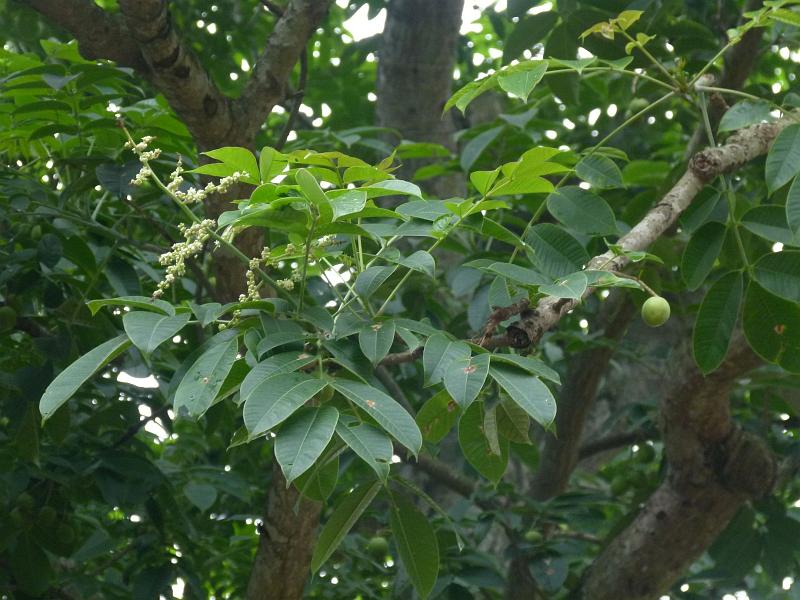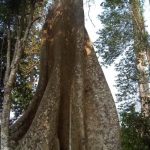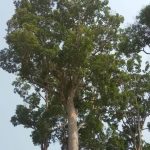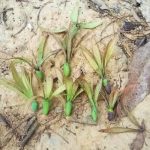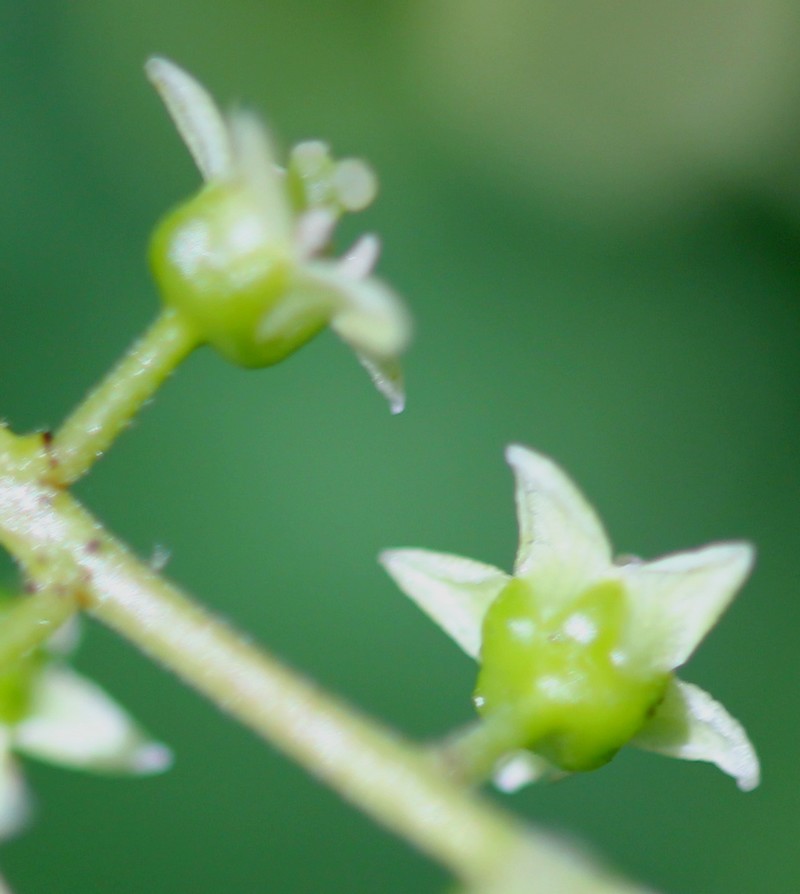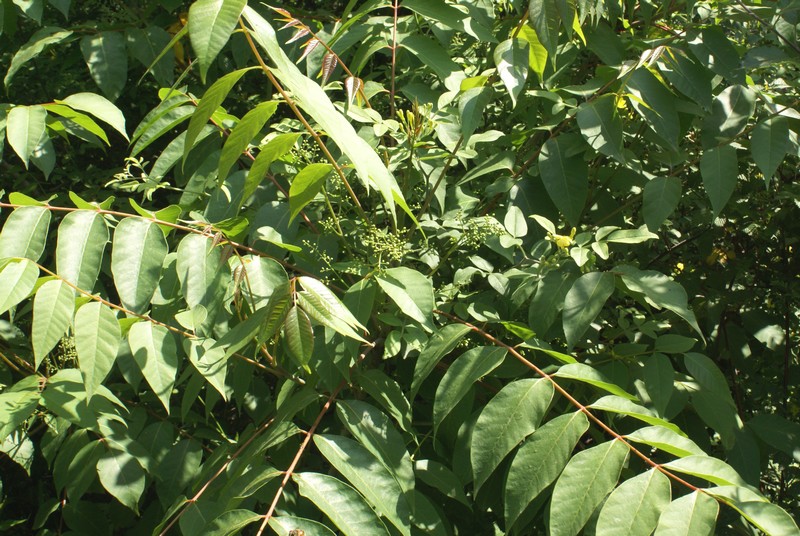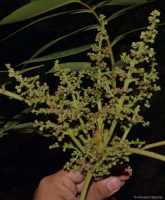|
ANACARDIACEAE (Reported from India: 24 genera, 74 species; Represented in eFI: 21 genera, 39 species, including 1 genus and 4 species from outside India)
References:
1. Leaves simple …. .. 2
+ Leaves compound, trifoliolate or pinnate ….. .. 5 2. Leaves opposite …… .. 9. Dobinea + Leaves altemate …… .. 3 3. Leaves crispate and with a distinct marginal vein .. .. 4. Drimycarpus + Leaves flat and without a marginal vein ……. .. 4 4. Leaves lanceolate or elliptic …… .. 3. Mangifera + Leaves obovate ……… .. 7. Semecarpus 5. Leaves trifoliolate ……. .. 1. Rhus (R. paniculata) + Leaves pinnate ………. .. 6 6. Scandent shrub …… .. 2. Pegia + Erect shrubs or trees ……. .. 7 7. Plants flowering precociously or with young leaves .. 8 + Plants leafy when flowering ….. .. 9 8. Leaflets with a distinct intramarginal vein …………… .. 6. Spondias + Leaflets without intramarginal veins …….. ..8. Lannea 9. Male flowers in broad panicles c 15cm; female flowers in panicles 7 – 40cm; fruit globose, subglobose or renifonn, less than 0.7cm diameter … 1. Rhus + Male flowers in narrow axillary panicles 3 — 7cm; female flowers solitary, axillary; fruit oblong-ovoid, c 3.5 x 2.5cm … 5. Choerospondias
.
Buchanania arborescens (Bl.) Bl. (S. Taiwan, Tropical Asia to N. Australia: Andaman Is., Bismarck Archipelago, Borneo, Cambodia, Jawa, Laos, Lesser Sunda Is., Malaya, Maluku, Myanmar, New Guinea, Northern Territory, Philippines, Queensland, Solomon Is., Sulawesi, Sumatera, Taiwan, Thailand, Vietnam as per POWO)
Rhus punjabensis J.L. Stewart ex Brandis (China (Gansu, Guizhou, Hubei, Hunan, Shaanxi, Sichuan, Yunnan), Tibet, India (Himachal Pradesh, Uttar Pradesh), Jammu & Kashmir (Kashmir, Jammu), Myanmar [Burma] (Mandalay), Nepal, Pakistan (Chitral, Murree) as per Catalogue of Life)
Swintonia floribunda Griff. (Assam to Sumatera: Andaman Is., Assam, Bangladesh, Malaya, Myanmar, Sumatera, Thailand, Vietnam as per POWO)
Toxicodendron wallichii (Hook. fil.) Kuntze (Himalaya to S. Tibet and N. Thailand: East Himalaya, Nepal, Thailand, Tibet, Vietnam, West Himalaya as per POWO) .
Species & genera pages of Anacardiaceae are now with images : 1 post by 1 author.
Species & genera pages of Anacardiaceae in efloraofindia are now with images.
I started this exercise on 25th Jan.’16 in my residual time & now today (14.2.16), it is complete.
It involves inserting images on around 37 species pages (say around 130 images) & 17 genera pages. It also involved a lot of cleansing work like deletion of duplicate/ wrong pages, correctly identify some of the threads, putting them at their proper place, proper formatting of the species pages etc.
I request our members to pl. take up one family each & try to make efloraofindia more constructive. We will be rendering what ever assistance is required by the members, in this matter.
|
Anacardiaceae
Updated on December 24, 2024

